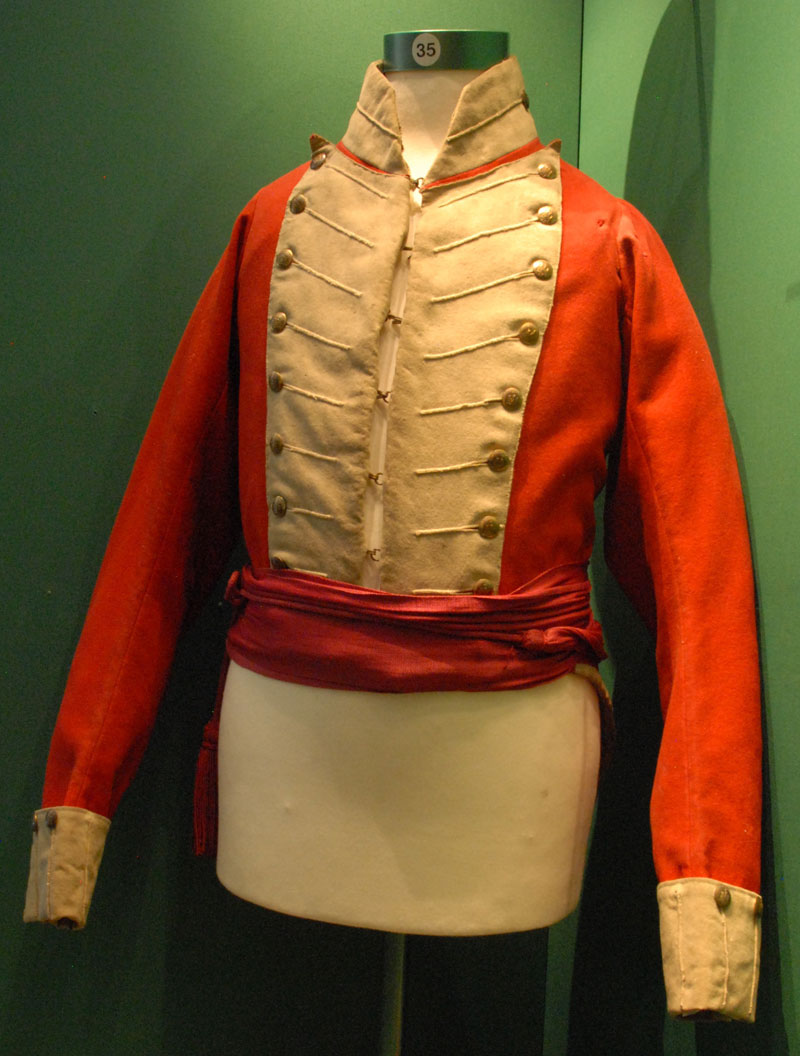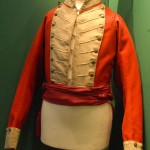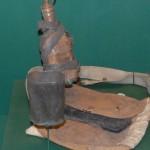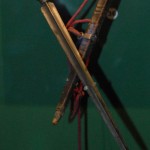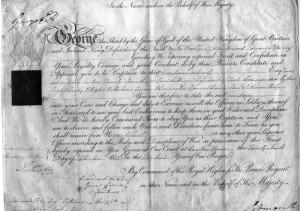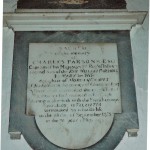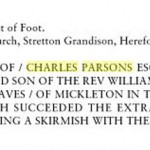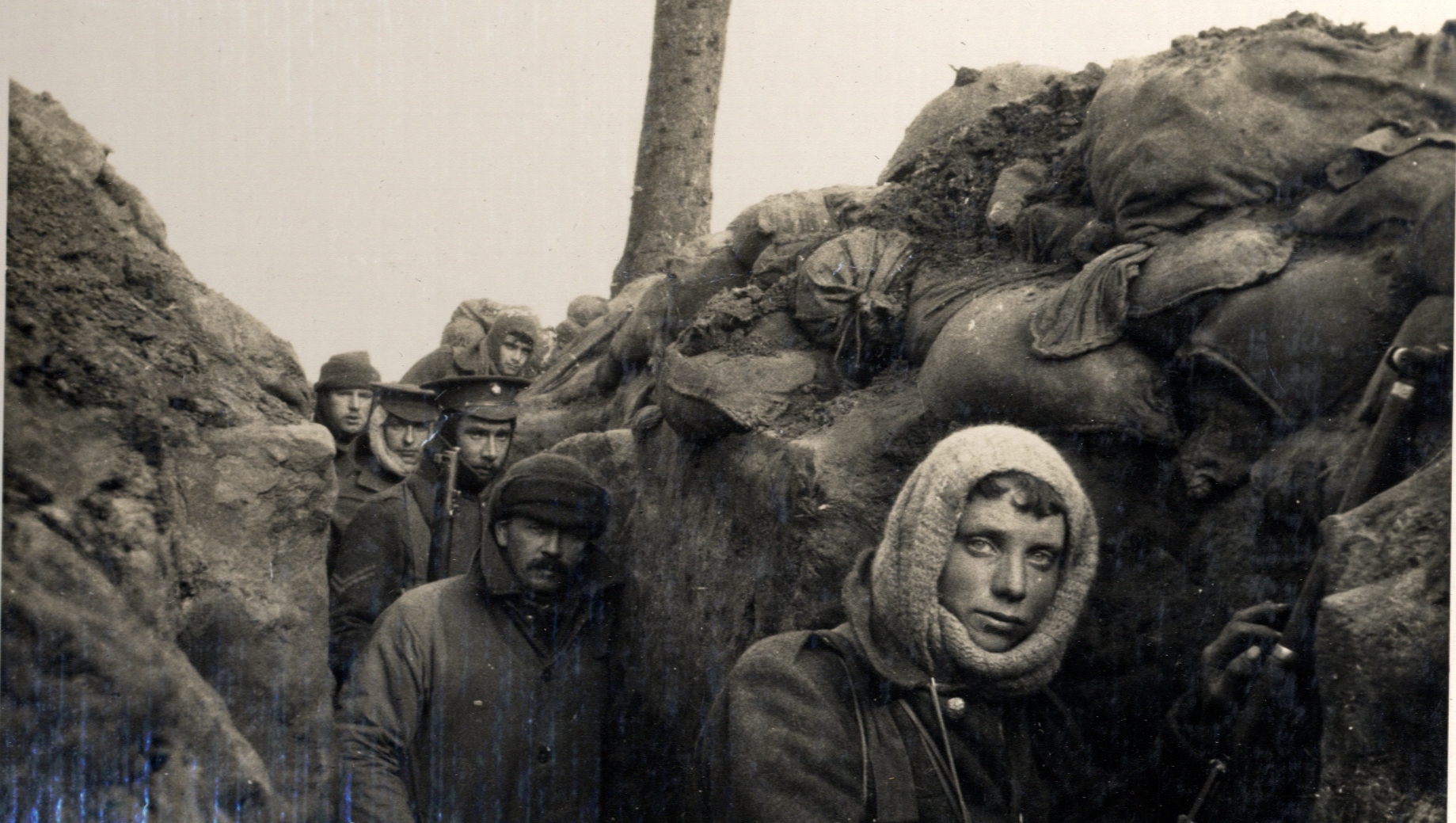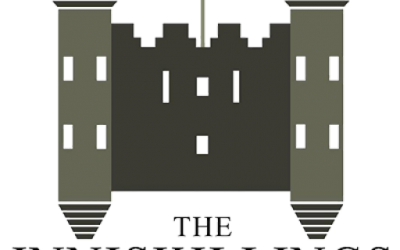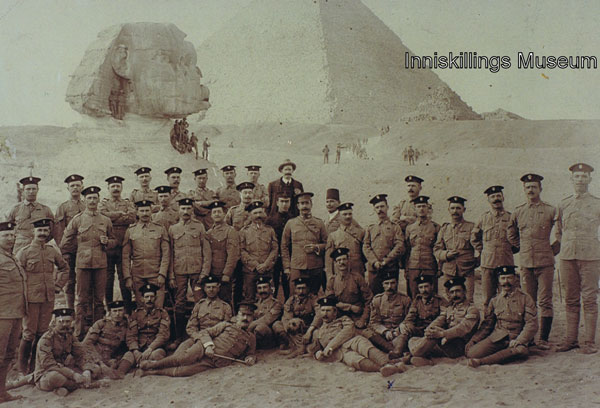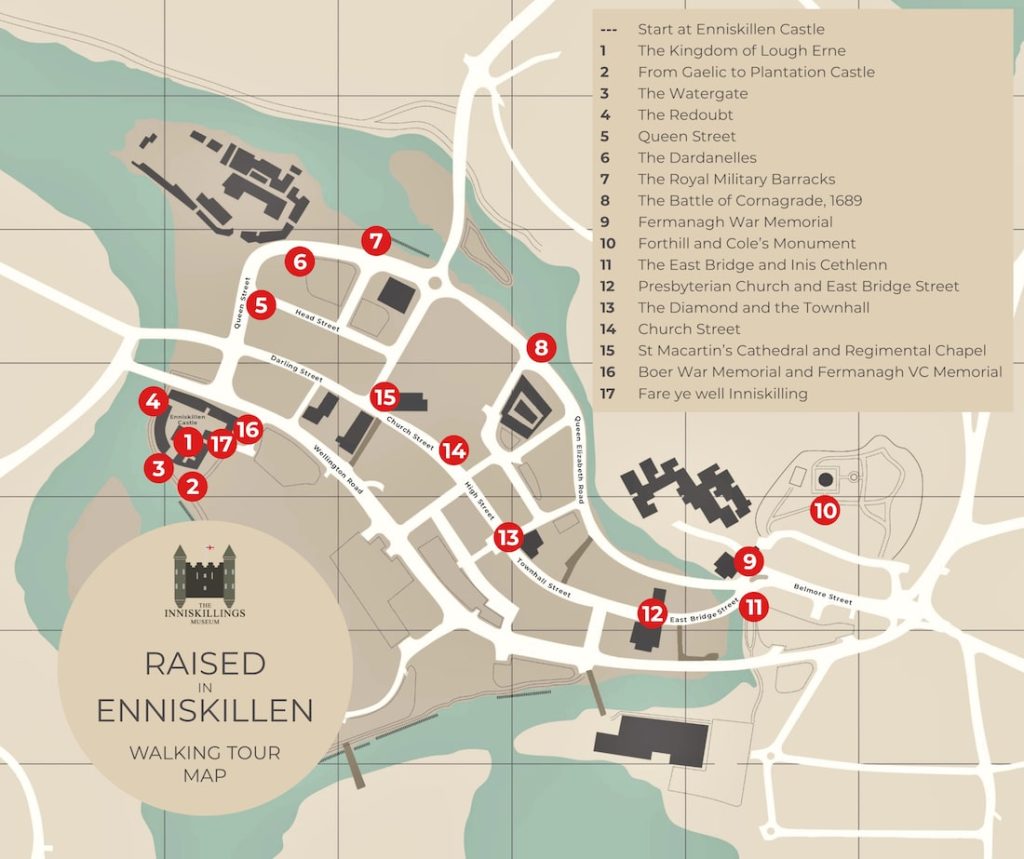Some very rare 200 year old items from the period of the Peninsula War are on display in the Inniskillings Museum. These items are the belongings of two Inniskilling officers. They are linked in an extraordinary way, though the items came to the Museum at different times and from different donors. The two men served at the same time in the same battalion.
Firstly on display is the red coatee which belonged to Captain Edward Pope of the 2nd Battalion of the Inniskillings in about 1812. Also on display are the accoutrements of Captain Charles Parsons from the same time, and also from the 2nd Inniskillings. Parson’s items are his haversack, which was used to carry food, his water bottle, his mess tin, a homemade dirk, fashioned from a musket bayonet and his sash of rank.
- Captain Pope’s Coatee
- Captain Parsons’ Accoutrements, haversack, water bottle and mess tin
- Captain Parsons’ Dirk
The Museum also possesses the warrant dated 1813 appointing Edward Pope to succeed Charles Parsons as a company commander after the latter was wounded.
Historical background.
From 1805 and 1806 the First and Second Battalions of the Inniskillings were on campaign in the eastern Mediterranean, and were based in Malta and Sicily.
In 1806, the 1st Battalion was part of a small army sent to Italy, south of Naples, to attack French occupation forces. The French were defeated at the battle of Maida, the first time British redcoats had succeeded against the hitherto invincible French. Captain Pope was present at the battle.
Then, in 1812-13, these two Battalions of the Inniskillings were a part of an Anglo/Sicilian army sent across the Mediterranean to eastern Spain to link up with a Spanish army and create a diversion against French forces and prevent reinforcements reaching the French armies facing the Duke of Wellington’s allied army in Portugal and western Spain.
Overall, this eastern Spanish campaign was not a particularly memorable one. It suffered from poor leadership and too frequent changes of command. This was in contrast to the success of Wellington. (in his army were the 3rd Inniskillings)
In March 1813, in a skirmish near the town of Alcoy in S-E Spain, the 2nd Battalion encountered the French for the first time. The Inniskillings were caught by an entire French division and but for the timely arrival of 58th Regiment of Foot, things would have gone badly. In the action Captain Charles Parsons was seriously wounded and Captain Edward Pope was appointed to succeed him as a company commander.
Charles Parsons died at home in September 1813, aged 26, from an infection following an operation to remove a musket ball from his thigh.
- The Church of St Lawrence where Charles Parsons’ father was Vicar
- Parsons’ Memorial in St Lawrence’s Church
- Memorial Tablet to Charles Parsons
All photographs (except Memorial Tablet, Memorial & Church) are courtesy of The Inniskillings Museum Collection

